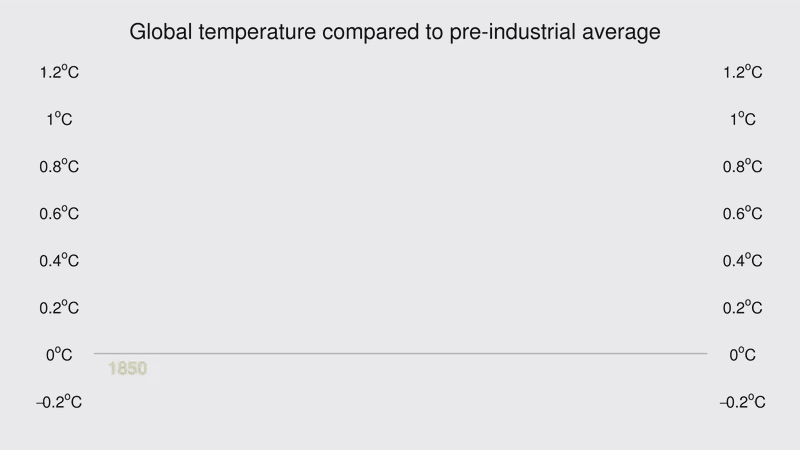Since the mid-19th century, the trajectory of global temperatures has undergone significant shifts, closely intertwined with the onset of the Industrial Revolution.
This increase is largely attributed to human activities, particularly the emission of greenhouse gases like carbon dioxide from burning fossil fuels and deforestation. Notably, many of the hottest years on record have occurred within recent decades, underscoring the acceleration of global warming.
The graph below created by Reddit user: neilrkaye shows global temperature compared to pre-industual average.

Here is another visualization of average global temperature from 1860 to 2021 compared to pre-industrial values.
In the visualization below, the x-axis represents a range of temperatures compared to 1961-1990 for the years indicated at that latitude.
Efforts to address climate change include international agreements like the Paris Agreement, aiming to limit global warming to well below 2 degrees Celsius above pre-industrial levels. However, adaptation to the impacts of climate change remains a critical challenge, requiring coordinated action across sectors and nations to build resilience and mitigate vulnerabilities in the face of a changing climate.
Interested in delving deeper into the topic of global warming? Consider exploring these books.


This post may contain affiliate links. As an Amazon Associate, I earn from qualifying purchases.